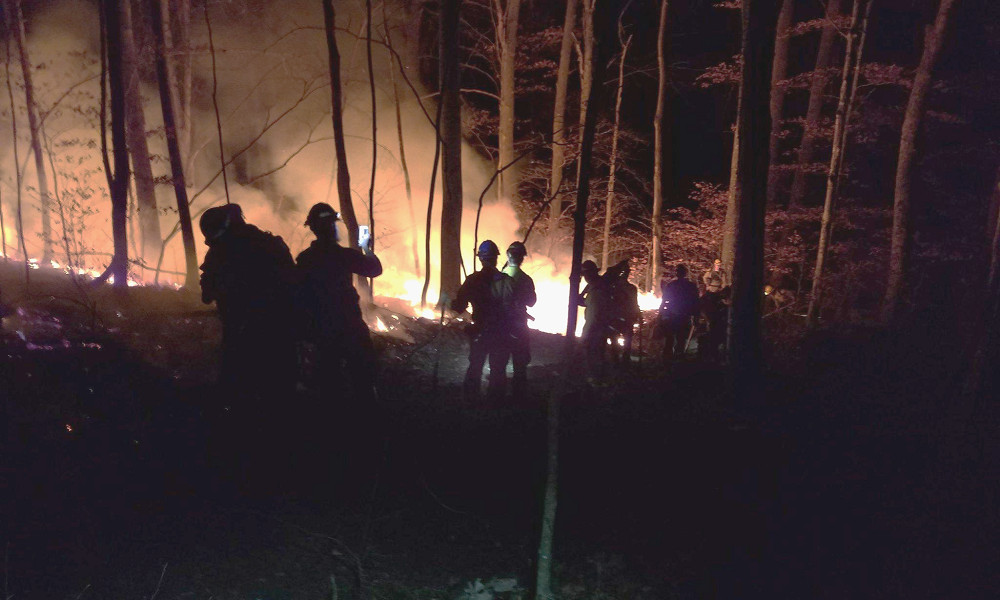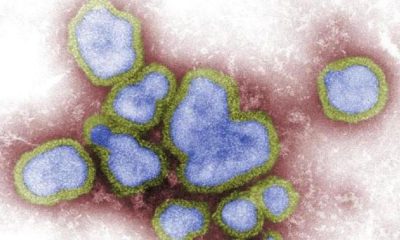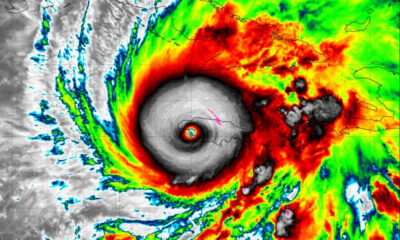Reviews
How night vision technology is helping environmentalists

An ecologist’s work combines a variety of theoretical and practical research to understand the current state of the environment better and assess the extent of human impact on its processes. While specialists can handle the theory independently, in practice, they struggle to perform various tasks without the aid of modern technology. One such technology is night vision. It enables practical research in the dark, allowing for a more objective assessment of the environmental situation in each region and globally. Below is how NV technology makes the work of ecologists easier and more productive.
NV technologies and their features
Night vision technology is a unique invention of humankind. It became available to people only about 80 years ago, but in that short time, it has become an indispensable tool. Today, devices supporting this technology are widely used in various applications, ranging from hunting and military operations to medicine and the automotive industry. Night vision is also used in environmental studies. Specialists in this field use it to perform a variety of tasks in the dark.
Night vision is a technology that uses available light from stars, the moon, and various artificial sources (such as lanterns or spotlights) to enhance visibility. This light is converted and amplified, producing a clearly visible image. It reveals multiple objects and their details that were previously invisible due to insufficient lighting. There are digital and analog night vision systems, both of which are used by environmentalists in their work.
Thermal imaging is a close relative of night vision. It provides visibility even in complete darkness and offers numerous other advantages. Ecologists and countless other professions actively utilize the capabilities of thermal imaging. Combinations of night vision and thermal imaging are also becoming available in various industries. Together, they compensate for each other’s shortcomings and demonstrate maximum performance in any environmental conditions.
The role of night vision in environmentalists’ work
NV technologies play a vital role in the work of various professionals. Environmentalists are no exception. They actively use a variety of equipment and derive particular benefits from it. This section examines what night video offers professionals and how they utilize it to achieve their goals.
Helps with environmental monitoring
Environmental monitoring is a key task for specialists. It enables a comprehensive study of the environment and the identification of existing problems. This work also helps better understand the impact of natural and anthropogenic factors on various ecological processes. Monitoring is carried out not only during the day but also at night. After sunset, when visibility becomes poor, ecologists retrieve their night vision goggles from their backpacks and continue their professional duties. Thanks to the capabilities of NV technology, specialists can accurately assess the state of the environment, observe various animal species, and much more. The results of this work serve as the basis for further research and the identification of the most effective methods to improve the environmental situation in a region, continent, or the entire planet.
Helps with recording the environmental impacts of human activity
Humans have always been and will always be the environment’s greatest enemy. Their activities contribute to the deterioration of the ecological situation and result in negative impacts on wildlife. Studying the consequences of this process is the responsibility of ecologists. In this work, they actively use NVD technologies, which enable them to perform tasks at night. Using various NVDs, specialists record the impact of anthropogenic factors on nocturnal animal populations, assess changes in areas with poor visibility (e.g., caves, abandoned mines, etc.), and determine the impact on ecosystems in areas of construction and agricultural activities. All this provides ecologists with a wealth of important information, helping them develop effective measures to protect the environment from human activities.
Simplifies the study of endangered species
Environmental degradation is often the primary cause of extinction for various animal species. These creatures lose habitat, become infected with viruses to which they have no immunity, or cease actively reproducing due to external factors. To prevent these conditions from leading to the complete extinction of rare species, ecologists carefully study the current situation and identify the causes of these problems. During this work, they use night vision technology. It provides good visibility in low-light conditions and enables 24/7 research. Night vision simplifies population assessments, studies of endangered species population dynamics, and much more. NV technology is beneficial when ecologists focus on exclusively nocturnal animals. In this case, it will be impossible to complete the assigned tasks without good optics.
Helps with conducting research in natural areas
Ecologists conduct their research in a variety of natural environments. Each requires a unique approach and the right equipment. However, despite the diversity of locations, night vision devices are essential in all of them. In forests, they allow specialists to see clearly in dense vegetation, in mountainous areas, to observe what’s happening in caves and poorly lit gorges, and in wetlands, to conduct work during the peak periods of activity for local inhabitants (at dawn and after sunset). Thanks to NV technologies, ecologists have the opportunity to collect maximum valuable information that can help improve the environmental situation in each specific location.
Improves the safety of environmental expeditions
Expeditions are an integral part of the ecologist’s profession. Ecologists often travel to natural locations to study environmental conditions and seek ways to improve the health of various ecosystems. Typically, such expeditions necessitate ecologists to spend several days or even weeks in proximity to the environment, often spending nights outdoors. In these conditions, NVD technology becomes a real lifesaver. It provides good visibility after sunset, thereby increasing the safety of all expedition participants. Various NVDs help detect approaching predators, orient themselves, and identify holes, cliffs, and other hazards. All this reduces the risk of multiple accidents and increases the chances of a successful expedition.
What NV devices do environmentalists use?
Night vision plays a vital role in the work of ecologists. Therefore, it’s no surprise that devices supporting this technology are essential equipment for specialists. They use various types of NVDs in their work. The most popular are night vision binoculars and monoculars. These devices allow for the exploration of the surrounding area and the collection of valuable information. Ecologists’ binoculars and monoculars are typically small and lightweight, yet offer a wide range of features. This makes this equipment ideal for expeditions in any terrain. Thermal imaging binoculars and monoculars are equally popular among ecologists. They work effectively even in complete darkness and can “see” through certain obstacles (for example, helping to detect animals even in dense vegetation).
NV goggles are also indispensable for ecologists. These devices are ideal for performing various tasks in the dark, leaving their hands free for other activities. With them secured to their heads, specialists can move safely, conduct observations, and record data in their notebooks without needing lengthy breaks. Ecologists also use NV and TI cameras. These devices offer unlimited opportunities for video recording and collecting evidence of environmental problems in the expedition region. These cameras are also an excellent tool for creating video reports and educational materials on environmental topics.
Ecologists perform a significant amount of research work every day. Some of this work is conducted at night, so night vision technology is essential for these specialists. It helps improve the effectiveness of environmental monitoring, document the impact of human activity on the environment, assess populations of nocturnal species, and much more. Night vision also makes expeditions safer and the specialists’ work more productive. All of this demonstrates the indispensability of NV technology for environmentalists. This is true today, and the importance of night vision will only increase in the future.

-

 Legal6 days ago
Legal6 days agoMichigan man JD Vance sentenced to 2 years for threatening Trump and JD Vance
-

 Politics1 week ago
Politics1 week agoU.S. to designate Maduro-linked Cartel de los Soles as terrorist organization
-

 Health7 days ago
Health7 days agoCambodia reports fatal H5N1 bird flu case in 22-year-old man
-

 World4 days ago
World4 days agoHurricane Melissa registered 252 mph wind gust, breaking global record
-

 Legal4 days ago
Legal4 days agoWoman in critical condition after being set on fire on Chicago train
-

 Politics7 days ago
Politics7 days agoEpstein survivors release PSA calling on Congress to release all files
-

 Legal4 days ago
Legal4 days ago1 dead, 2 injured in shooting at Dallas Walmart parking lot
-

 Legal3 days ago
Legal3 days agoSuspect in San Diego stabbing shot by authorities after fleeing into Mexico




